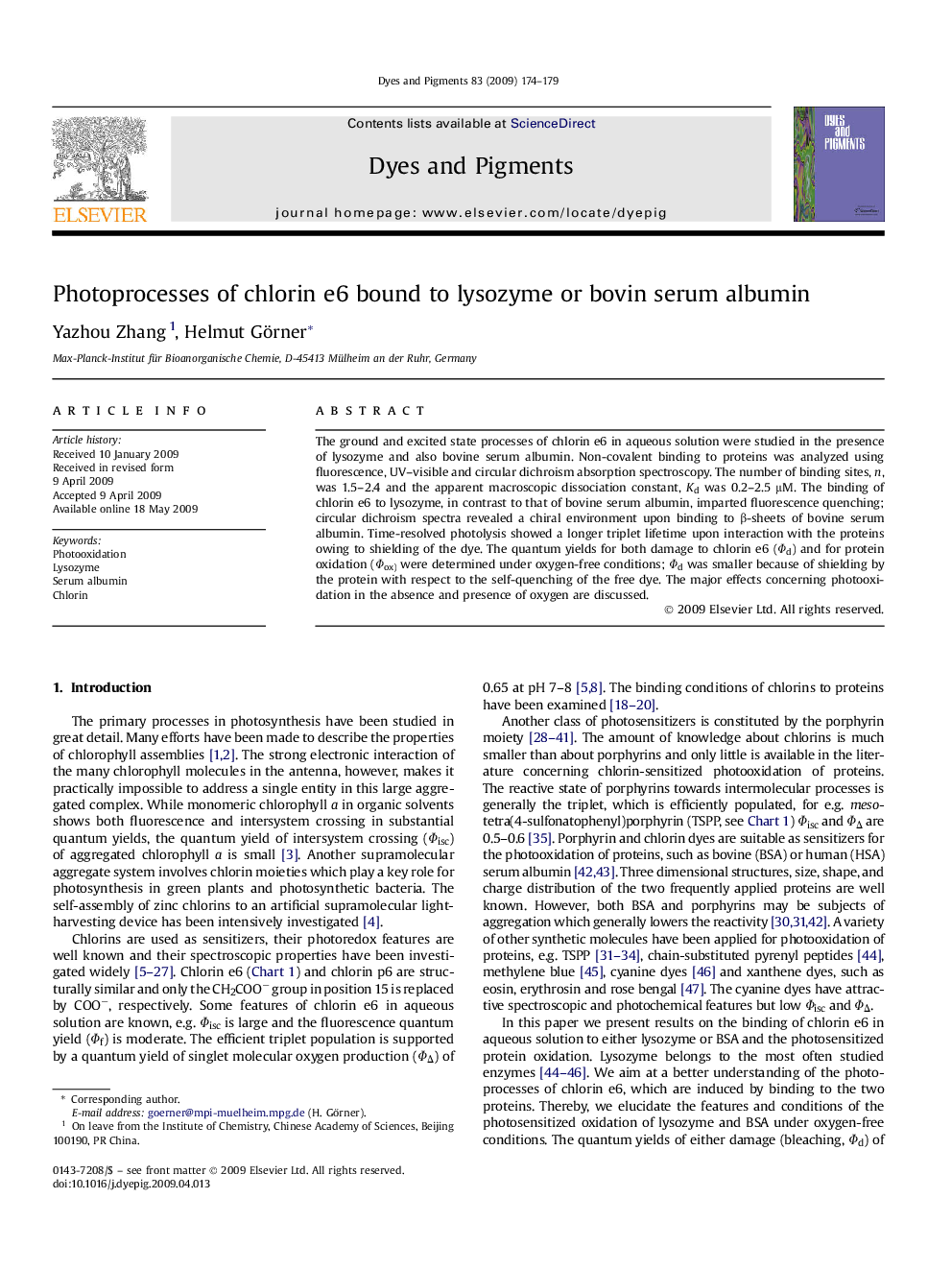| Article ID | Journal | Published Year | Pages | File Type |
|---|---|---|---|---|
| 177357 | Dyes and Pigments | 2009 | 6 Pages |
The ground and excited state processes of chlorin e6 in aqueous solution were studied in the presence of lysozyme and also bovine serum albumin. Non-covalent binding to proteins was analyzed using fluorescence, UV–visible and circular dichroism absorption spectroscopy. The number of binding sites, n, was 1.5–2.4 and the apparent macroscopic dissociation constant, Kd was 0.2–2.5 μM. The binding of chlorin e6 to lysozyme, in contrast to that of bovine serum albumin, imparted fluorescence quenching; circular dichroism spectra revealed a chiral environment upon binding to β-sheets of bovine serum albumin. Time-resolved photolysis showed a longer triplet lifetime upon interaction with the proteins owing to shielding of the dye. The quantum yields for both damage to chlorin e6 (Φd) and for protein oxidation (Φox) were determined under oxygen-free conditions; Φd was smaller because of shielding by the protein with respect to the self-quenching of the free dye. The major effects concerning photooxidation in the absence and presence of oxygen are discussed.
